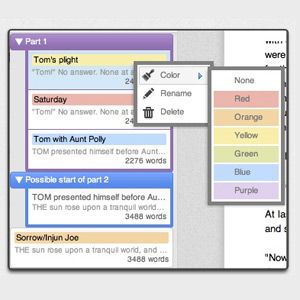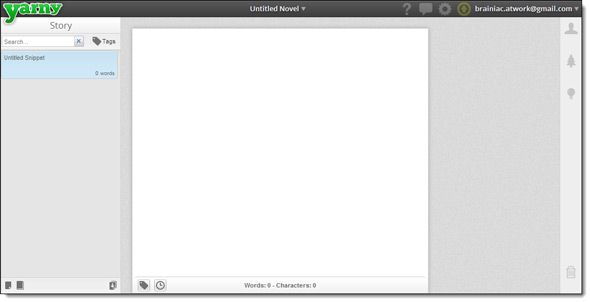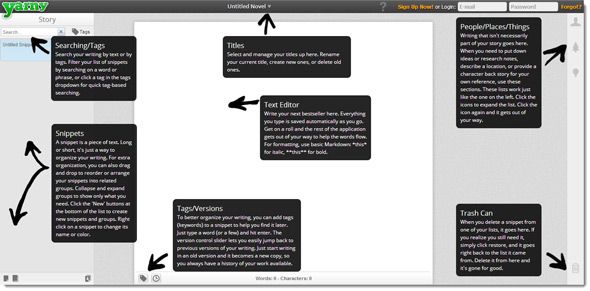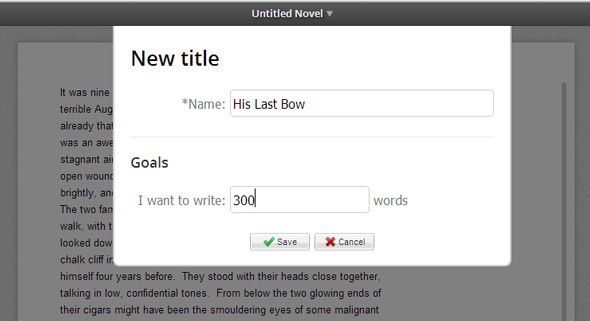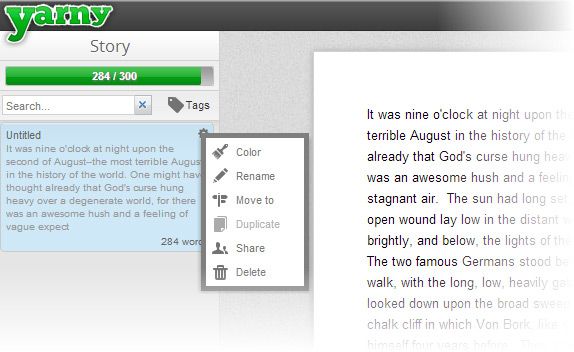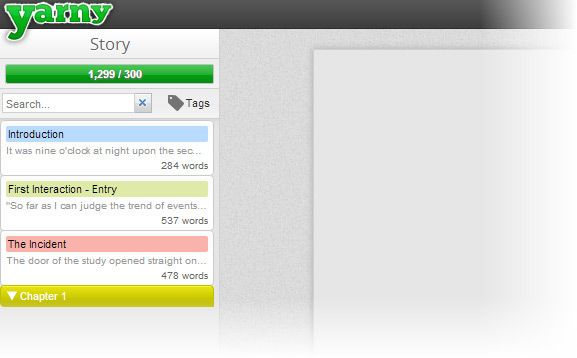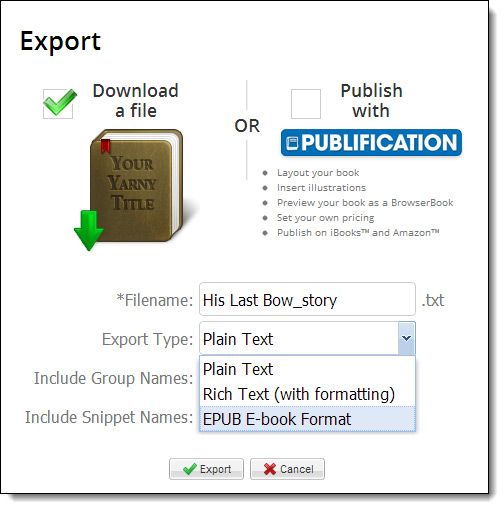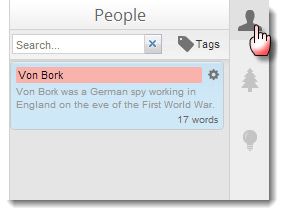Writing is almost like meditation. The mind whirrs around a million thoughts, but anyone who has been in the zone will attest to the fact that the calmness enveloping it shuts off the writer from the rest of the world. Creative work needs silence and a distraction free environment to connect those million thoughts. I am a writer in the very basic sense of the word and I have gone through my basic share of distraction free editors.
I am partial to some like Q10 and JDarkRoom. But that doesn’t stop me from trying out the next thing writing app that comes around the bend. The latest one that came into my horizon, literally dropped from the clouds. Yarny is different from the simple and minimal writing tools covered in the hyperlinked article. It is deceptively simple, because instead of being a plain Jane environment, it has the ingredients to help you craft your next bestseller.
Your Word Processor in The Cloud
When it comes to creative writing using a free software, yWriter is a popular choice (Mac users have their pick of creative writing applications too). yWriter has some great features for the price of zero – from storyboarding to re-ordering of scenes to dragging and dropping story elements for effective organization. Writing your next novel or even a little screenplay demands flexibility and sometimes everywhere-anywhere access. Yarny does what yWriter can’t – take your work to the cloud and make it available anywhere with a web connection. You can easily make your work available for others to read and appreciate.
Yarny asks you to register and log-in. The interface is minimal as you can see in the above screenshot. The subdued gray elements help to keep everything distraction free. Yarny gives you a walkthrough of the key features on a single graphic that helps you learn all about the process in a couple of minutes only:
Let’s Put Pen to Paper and Write Our First Novel
The above graphic is a bit difficult to understand, thanks to the constraints of image size. So, let’s put some ink to the paper and look into the select features on Yarny. For demonstration purposes, as you can see I have “plagiarized” Sir Arthur Conan Doyle’s His Last Bow. One of more likeable features comes right at the onset. Yarny lets you set targets – a daily goal of words you want to write. The cliché, ’drops make an ocean’ is so true for us literary types plagued by writer’s block and indiscipline. A target helps.
Yarny is minimal but it supports basic markdowns. That’s just about write because I feel that too many formatting elements come in the way of natural writing. Formatting is a digital invention after all. There are three fonts to choose from and three sizes. The Premium version of the application comes with theme support. Yarny also saves everything concurrently as you type so you don’t have to worry about hitting any save button.
The Basic Unit of Writing on Yarny – Snippets
Snippets are the organizational units of your writing on Yarny. Any block of text can be termed as a snippet, and these discrete snippets can be dragged, dropped, and re-ordered to organize your writing. In the following screenshot, you see a basic snippet constructed automatically from the first text I put down on the text area.
A few snippets down the line, properly colored and named gives me this screenshot:
Snippets can be named and colored. They can also be conveniently arranged into groups by a drag ‘n drop. You can also share snippets with your friends and take some constuctive feedback. You can create as many snippets and groups as you want. Think of snippets as discrete units of your thoughts on story development. Initially the order may not matter, later you can organize them into groups. Don't worry, even if there are just too many, snippets are fully text searchable.
You can export all of your snippets (essentially your entire book) with a click. Plain text, Rich-text, and e-Pub format is supported.
Snippets also extend to the three other story elements – People, Location, and Things. These are story elements and you can handle them the same way you handled the previous snippets. To build up the story, you can use this space for all your research.
Tags & Version Control
All snippets across the board can be tagged. Tags not only help you ‘catalog’ all your snippets with keywords; they also let you see the different parts of the story at a glance. A slider stands in for version control…you can jump back to an earlier version of your writing and that becomes a new copy. Pundits call it auto-versioning. So, you can keep multiple copies of a story arc and then prune them later.
Here’s Yarny’s official video which gives you a visual walkthrough around the tool again:
http://youtu.be/1wGh3uEkrWg
Yarny’s distraction free environment isn’t only for grand works of literature, but I guess it would do just as well with a school assignment. One of the limitations seems to be that you cannot work on multiple assignments. It would get a bit jumbled up and come in the way of focus. The learning curve is hardly there and within a few minutes, you can put down the first few lines of a hopeful bestseller.

